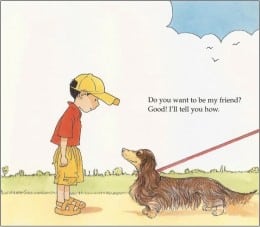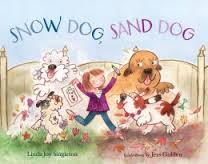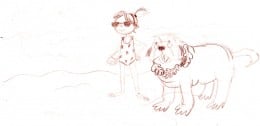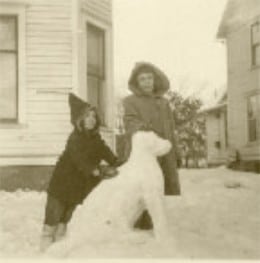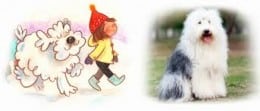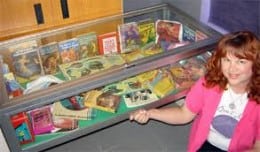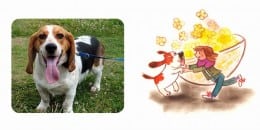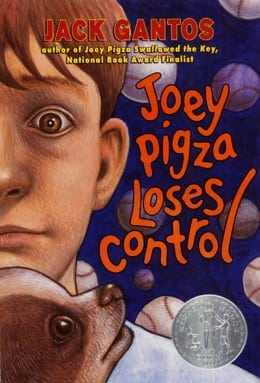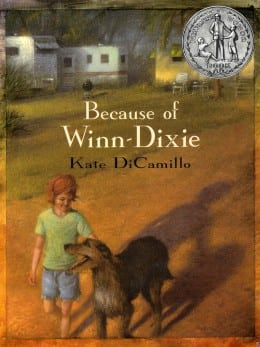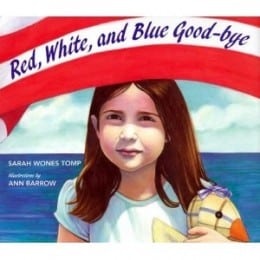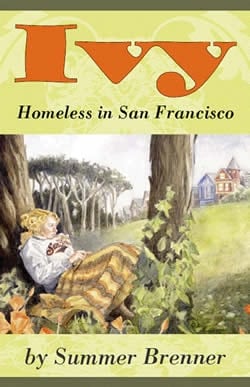 Today I welcome Summer Brenner to Best Dog Books, a blog that features interviews with authors who’ve written a canine story for kids or young adults.
Today I welcome Summer Brenner to Best Dog Books, a blog that features interviews with authors who’ve written a canine story for kids or young adults.
AOB: What is the title of your book? Pub date and publisher? Genre? Targeted age group? Illustrator?
IVY, HOMELESS IN SAN FRANCISCO
2010
PM Press/Reach And Teach
Targeted age: 9-12
Illustrator, Brian Bowes
AOB: Who is your key dog character(s) and what kind of dog is he/she? Feel free to list as many different breeds or mixes as necessary. Tell us a little more about him/her.
DICE is the name of a friendly, curious, exceedingly clever dog whose coat is checkered with black and white patches, thus his name. He’s a mix of Beagle and Rat Terrier.
AOB: In 70 words or less, provide a succinct plot description of your story.
Ivy and her dad Poppy are homeless. They spend most nights in a San Francisco park where they meet Dice. He lives in rambling house nearby with elderly Eugenia Orr and her brother Oscar. Adventures include scenes at a homeless shelter, a night in a friend’s car, a visit to Ivy’s school, an arrest by police, a reunion with the Orrs, and an art show for Poppy.
AWARDS:
Moonbeam Children’s Book Awards
Children’s Literary Classics
Links to reviews or blurbs you wish to share:
“Ivy, Homeless in San Francisco, is a compelling and riveting novel that reflects the alarming increase in the number of children who are homeless and living in poverty in America. Ivy is one of those children. Summer Brenner has masterfully crafted a book that is realistic, heartbreaking and funny.” — Patricia Tilton, Children’s Books Heal
“Often witty, occasionally heart-wrenching, this book offers insight into the lives of those who must endure living in shelters and on the streets.” — Children’s Literary Classics
“Ivy is an engaging, educational experience, with emotional range, density of characters, a cinematic visual imagination, and a heroine wild at heart. We have a lot to learn about homelessness, and Summer Brenner’s saga of fractured family and redeeming friendship takes us deep inside the experience, while agitating our broader concern with social justice. All this in a lucid, poetic prose. She not only will get young people to read but make them want to write as well.” — John Broughton, associate professor of psychology & education, Teachers College, Columbia University, New York
“Ivy is a story of homelessness. It is full of risk and tenderness, pain and insight all mixed with fear and hope. Author Summer Brenner engages readers by setting a course for a young girl and her father that requires connection and kindness in an uneasy world. Genuine characters tell the tale that is at once prickly and gentle. Readers will gain a picture of what over 1.5 million children in the US experienced this year. Ivy is a lovely book on a tough condition.” — Lyn Palme, library specialist, Contra Costa County, California
“Summer Brenner’s Ivy, Homeless in San Francisco, wraps itself around enough realism to give young readers hope that there are good people in our world and that good things do happen, often when least expected. My sixth grade San Francisco Bay Area English students always enjoy the magic that envelops Ivy. Summer’s poetic language captures the essence of San Francisco.” — Janet Volkmann, teacher, Oakland Unified School District, Oakland
Reviews by Children:
“The title made me feel this story would be an exiting and thrilling adventure. The book did not disappoint me. I know what a busy city San Francisco is, and being homeless there would not be the best. Although I would not want to be homeless, Ivy’s story showed me how to be loyal, independent and the importance of being resourceful. Ivy also taught me how much I am distracted by all kinds of electronics because she was a deep thinker. I think schools should teach from this book because of the great lessons.” — SunIm “Sunny” Chang, age 11, Oakland
“Ivy was sad but exciting at the same time. I was wondering what would happen every night. It stinks when you have to be homeless. If I knew someone who was homeless at my school I would want to help them. I think it would be really hard for homeless people to live out there when there is no shelter. As Eugenia Orr says, “The weather simply could not be helped.“ To me this means people who have a home have the choice to go in when it’s cold or hot, but homeless people have to live in the weather.” — Roan Linvill, age 8, Berkeley
“Ivy is a great book. I especially like the way the storyline curves up and down with exciting and quiet moments. When I was reading it, I kept on saying to myself, ‘No, just one more chapter, just one more chapter!’ In other words, I could not put it down.” — Arianna Delsman, age 9, Berkeley
“Homelessness is an issue that affects many different people in many societies. Ivy is an 11-year old homeless girl. She is just a year older than me and I count my blessings. In the book I learned about what some homeless families go through and how brave a young girl like Ivy can be in this type of situation.” — Eliza Leal, age 10, Weehawken, NJ
“Ivy was great, and I mean it! I hope that Ivy, Lost in New York will also be published.” — Isabel L., age 10, Oakland,
AOB: What inspired you to write this story?
For a year, I volunteered at a drop-in center for homeless women and children. Their stories shattered all assumptions and preconceptions about who was homeless and why.
AOB: What was the biggest challenge you had writing your story? How did you overcome it?
The challenges were to create an enjoyable and meaningful story about a very sobering subject; break through the stereotype of the homeless as male addicts, mentally unbalanced, and persons of color; and engage young readers’ empathy for a girl not so different than themselves but faced with responsibilities in a situation she didn’t choose.
AOB: What other YA/MG books have you written? Do any of them feature a key dog character? If so, which ones?
What are these stories about?
Other YA/MG books:
Richmond Tales, Lost Secrets of the Iron Triangle
Oakland Tales, Lost Secrets of The Town
Like Ivy, these two books feature a city. However, they focus on kids (African American and Latino) from low-income communities who time travel back into their city’s past and forward into their city’s future when they’ve grown up and helped to transform it into a safe, beautiful place for all. Alas, there is no dog.
Richmond Tales won a 2010 Historic Preservation award from the City of Richmond and was proclaimed the first all-city, all-read selection by the mayor. Since 2010, it has inspired an annual “Richmond Tales Literacy and Health Festival” at the Richmond Civic Center. In 2013, a play based on the book was co-produced by the East Bay Center for the Performing Arts and the Richmond Rotary.
Oakland Tales has been adopted for the eighth grade common core curriculum by the Oakland Unified School District for spring 2014.
AOB: What kind of story can we expect next from you? Is it about a dog? If so, what is it about?
Currently, I’m working on a YA/MG science fiction book about the future. I’m going to invite a dog to join us!
 AOB: What else would you like us to know about you or your story?
AOB: What else would you like us to know about you or your story?
I write books for adults, including noir crime novels.
AOB: Can you remember the first book that made an impact on you? And why?
Winnie the Pooh had everything I continue to love about storytelling. It is a combination of comedy and tragedy that mirrors the human condition.
AOB: What advice would you give to aspiring writers?
There’s only one thing to do to become a writer: write. As for those who have already written and aspire to be published, the traditional routes are difficult but the internet has provided interesting alternatives.
AOB: Where can readers go to find out more information about you and/or your books?
A list of books, reviews, and my biography are available at my website at www.summerbrenner.com
IVY, Homeless in San Francisco is available at Reach And Teach, an online catalog and store (in San Mateo) that feature books, toys, and educational tools focused on peace and social justice. Reach And Teach has also developed a teaching guide. www.reachandteach.com
Richmond Tales and Oakland Tales may be ordered from www.communityworkswest.org
info@communityworkswest.org
AMAZON carries most of my books.
Web page: www.summerbrenner.com
Thank you Summer Brenner for joining us at Best Dog Books!
For other great books about dogs, check out 101 Best Dog Books for Kids.
For published authors and unpublished authors, check out our writing contests.





